Scott Boag
A Conversational Digital Assistant for Intelligent Process Automation
Jul 27, 2020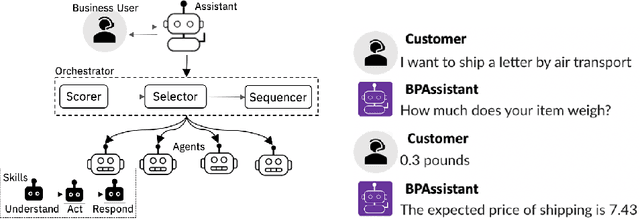


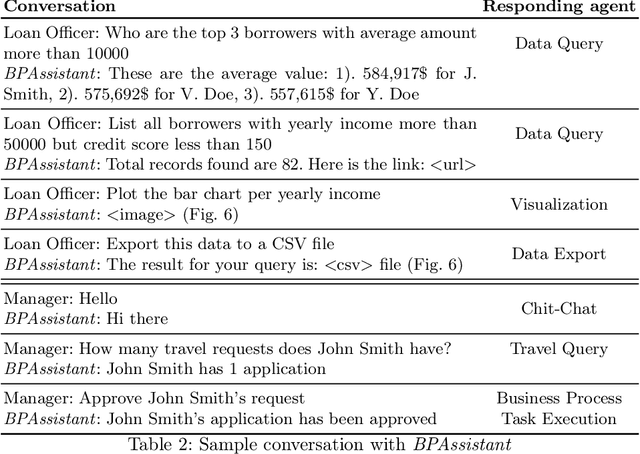
Abstract:Robotic process automation (RPA) has emerged as the leading approach to automate tasks in business processes. Moving away from back-end automation, RPA automated the mouse-click on user interfaces; this outside-in approach reduced the overhead of updating legacy software. However, its many shortcomings, namely its lack of accessibility to business users, have prevented its widespread adoption in highly regulated industries. In this work, we explore interactive automation in the form of a conversational digital assistant. It allows business users to interact with and customize their automation solutions through natural language. The framework, which creates such assistants, relies on a multi-agent orchestration model and conversational wrappers for autonomous agents including RPAs. We demonstrate the effectiveness of our proposed approach on a loan approval business process and a travel preapproval business process.
A Unified Conversational Assistant Framework for Business Process Automation
Jan 07, 2020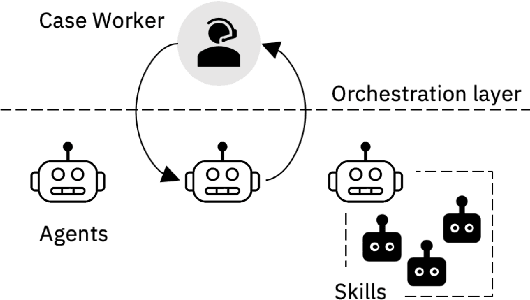
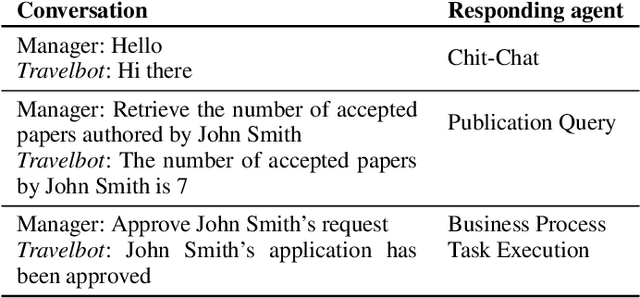
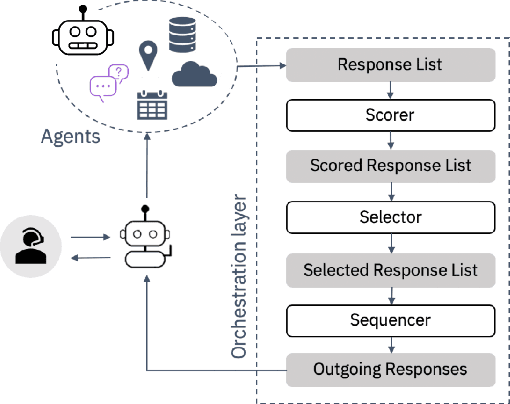
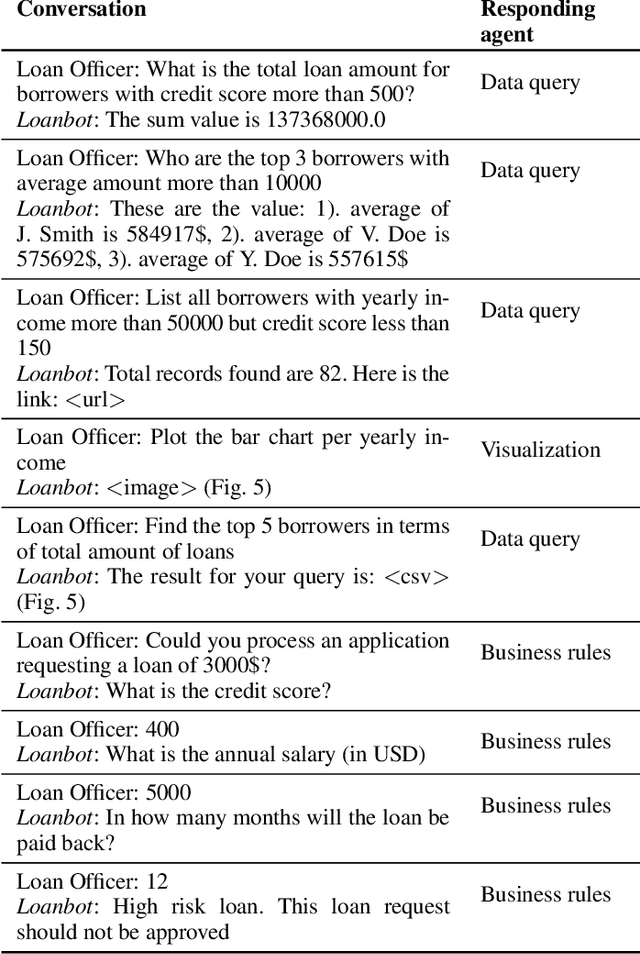
Abstract:Business process automation is a booming multi-billion-dollar industry that promises to remove menial tasks from workers' plates -- through the introduction of autonomous agents -- and free up their time and brain power for more creative and engaging tasks. However, an essential component to the successful deployment of such autonomous agents is the ability of business users to monitor their performance and customize their execution. A simple and user-friendly interface with a low learning curve is necessary to increase the adoption of such agents in banking, insurance, retail and other domains. As a result, proactive chatbots will play a crucial role in the business automation space. Not only can they respond to users' queries and perform actions on their behalf but also initiate communication with the users to inform them of the system's behavior. This will provide business users a natural language interface to interact with, monitor and control autonomous agents. In this work, we present a multi-agent orchestration framework to develop such proactive chatbots by discussing the types of skills that can be composed into agents and how to orchestrate these agents. Two use cases on a travel preapproval business process and a loan application business process are adopted to qualitatively analyze the proposed framework based on four criteria: performance, coding overhead, scalability, and agent overlap.
FfDL : A Flexible Multi-tenant Deep Learning Platform
Sep 14, 2019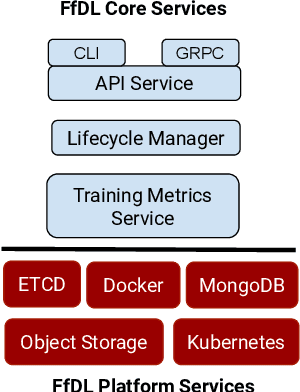

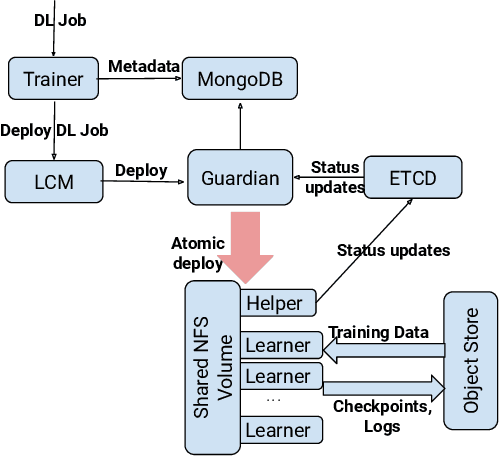
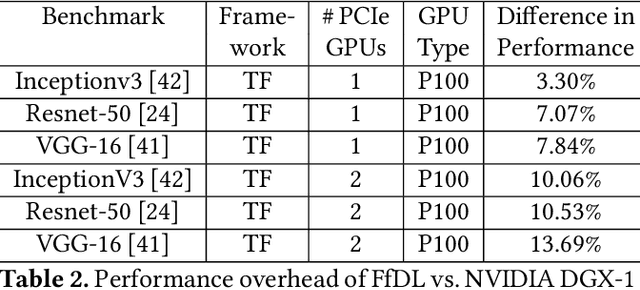
Abstract:Deep learning (DL) is becoming increasingly popular in several application domains and has made several new application features involving computer vision, speech recognition and synthesis, self-driving automobiles, drug design, etc. feasible and accurate. As a result, large scale on-premise and cloud-hosted deep learning platforms have become essential infrastructure in many organizations. These systems accept, schedule, manage and execute DL training jobs at scale. This paper describes the design, implementation and our experiences with FfDL, a DL platform used at IBM. We describe how our design balances dependability with scalability, elasticity, flexibility and efficiency. We examine FfDL qualitatively through a retrospective look at the lessons learned from building, operating, and supporting FfDL; and quantitatively through a detailed empirical evaluation of FfDL, including the overheads introduced by the platform for various deep learning models, the load and performance observed in a real case study using FfDL within our organization, the frequency of various faults observed including unanticipated faults, and experiments demonstrating the benefits of various scheduling policies. FfDL has been open-sourced.
 Add to Chrome
Add to Chrome Add to Firefox
Add to Firefox Add to Edge
Add to Edge